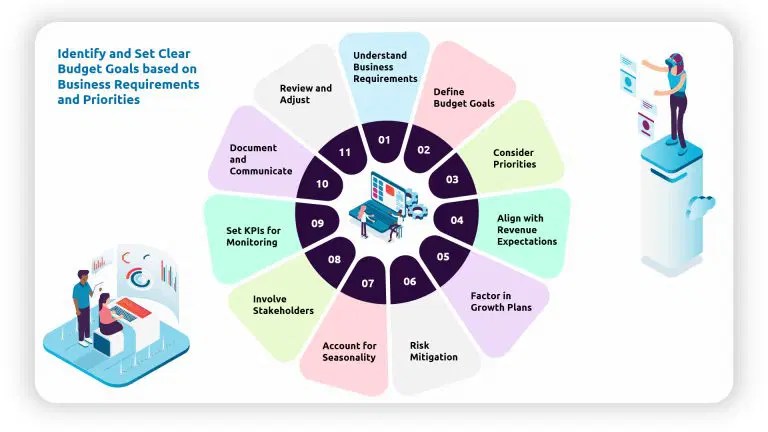
Continuing from the previous discussion on FinOps and cloud cost management, the second part of the series delves into the critical step of identifying and setting clear budget goals aligned with business requirements and priorities.
- Understand Business Requirements:
- Example: A software development company plans to launch a new application, aiming for a seamless user experience, scalability, and quick time-to-market.
- Define Budget Goals:
- Setting a $50,000 budget for the initial cloud infrastructure costs related to the application launch, covering compute resources, storage, and other essential cloud services.
- Consider Priorities:
- Allocating budget based on critical components; for instance, emphasizing high-performance servers for optimal compute resources.
- Align with Revenue Expectations:
- Aligning the budgeting process with the timeline for revenue generation, possibly adopting a phased budget approach as the application gains users and revenue.
- Factor in Growth Plans:
- Anticipating rapid user growth and planning for scalable solutions like auto-scaling features to accommodate increased demand efficiently.
- Risk Mitigation:
- Allocating a contingency portion of the budget to handle unforeseen circumstances, such as unexpected spikes in usage or changes in project scope.
- Account for Seasonality:
- Adjusting the budget for seasonality in user engagement, like increased resource usage during peak periods (e.g., holiday seasons for a retail application).
- Involve Stakeholders:
- Engaging various teams – developers, operations, finance – to ensure understanding of budget goals and their role in adhering to allocated budgets.
- Set KPIs for Monitoring:
- Establishing key performance indicators (KPIs) related to spending, monitoring metrics like cost per transaction or cost per active user.
- Document and Communicate:
- Documenting budget goals, priorities, and assumptions, fostering transparency and alignment with the overall business strategy.
- Review and Adjust:
- Periodically reviewing budget goals in response to changing business conditions, accommodating modifications like adding new features to the application.
In summary, setting clear budget goals involves a comprehensive understanding of business requirements, alignment with priorities, growth planning, and risk management. It’s an iterative process that demands collaboration and adaptability as business conditions evolve.

 English | EN
English | EN 
